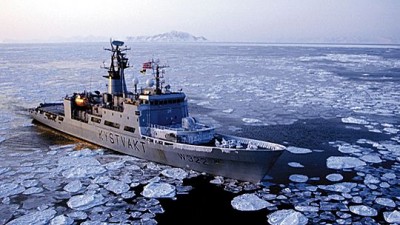As Southern Norway basked in unseasonably warm sunshine this week came news of record little ice in the Arctic and reports that the Barents Sea is nearly ice-free. The entire ecosystem is changing, claimed researchers, while a Norwegian meteorologist also discovered that Norway was under a record thin ozone layer last month.

“It’s just as if there’s a little hole in the ozone layer right over Scandinavia,” state meteorologist Tarjei Breiteig told Kristiansand newspaper Fedrelandsvennen on Wednesday.
Breiteig carried out calculations showing how extremely thin the ozone layer has been, based on data from NASA and KNMI Climate Explorer. Researchers have been monitoring the ozone layer, part of the stratosphere that reduces the warmth of the sun, with satellites for 37 years. Never has so little ozone been measured over Scandinavia as in February.
Tove Svendby, a researcher at the Norwegian Institute for Air Research, said she has full confidence in Breiteig’s calculations. “There’s been especially little ozone this winter,” she said, with an abnormally cold stratosphere and powerful polar circulation.
Warnings for Easter skiers, and the globe
The situation has improved in recent weeks but the Norwegian cancer association (Kreftforeningen) was warning Wednesday that a thin ozone layer can make sun rays stronger than they normally are at this time of year, just as thousands of Norwegians are about to head to the mountains for skiing during next week’s Easter holidays. Skiers were urged to use plenty of sunblock lotion and dark glasses in open terrain, because the reflection from snow can increase ultraviolet rays by as much as 50 percent. Without protection, skiers risk sunburns and snow-blindness.
Climate researchers, meanwhile, were reporting record high temperatures around the globe, with termometers showing an average increase of 1.35 degrees over normal in February. “This is a completely crazy temperature increase for a single month,” physics expert Bjørn Samset at the CICERO center for climate research in Oslo told news bureau NTB. Hans Olav Hygen of the state meteorological institute said he wasn’t surprised. “We’re seeing global warming in full force,” Hygen told NTB.
On Wednesday the Norwegian Polar Institute in Tromsø also reported “extreme warmth” in the Arctic this winter, resulting in seas that no longer freeze to ice in large areas. The temperature at the North Pole was 0C (32F) one day this winter, at least 30 degrees higher than normal. The US’ National Snow and Ice Data Center and NASA reported that the spreading of sea ice in the Arctic in February was 1.16 million square kilometers less than viewed as normal. Record small amounts of ice were recorded in January.
January and February were also the warmest months recorded in the Arctic since measurements began, with temperatures 4- to 14 degrees over normal.
‘Drama in the seas’
“What we’re seeing today is in many ways an ice situation in the Barents Sea in winter that’s like what we saw in the summer 10 years ago,” Jan-Gunnar Winther, director of the Norsk Polarinstitutt told Norwegian Broadcasting (NRK). “We expected an ice-free Barents Sea in 2050, given our climate models. Now we’re seeing it already in 2016.”
Temperatures were in the double digits around Southern Norway both Tuesday and Wednesday, as residents basked in a very early and warm spring. While many welcome the warmth and sunshine, Winther worries about how Svalbard has become a “hotspot” with even more warming than elsewhere in the Arctic, and how the lack of ice up north is changing the ecosystem.
“We’re seeing dramatic changes in the Barents and on Svalbard, and they’re coming faster and more powerfully than the researchers have predicted,” Winther said. Warmers waters are sending fish like cod and mackerel farther north, he noted, while species that had adapted to ice like seals, polar bears and even plankton are under pressure.
“We have too little knowledge about how the nature will adapt to quick climate change,” Winther said. “There’s drama in the seas right now, and there will be winners and losers in this complex ecosystem where species compete with each other.”
newsinenglish.no/Nina Berglund

